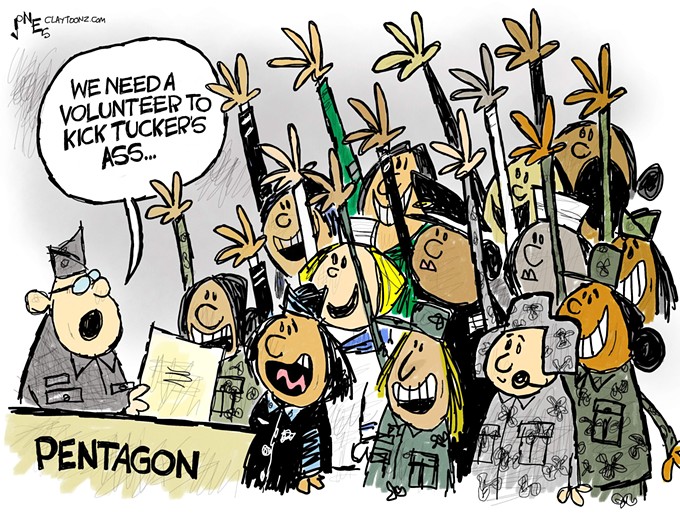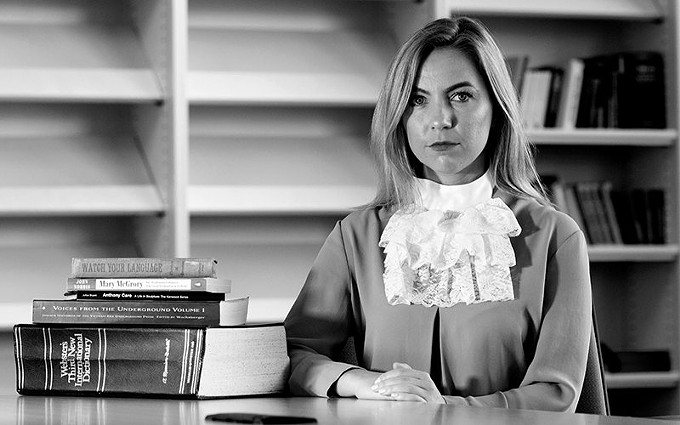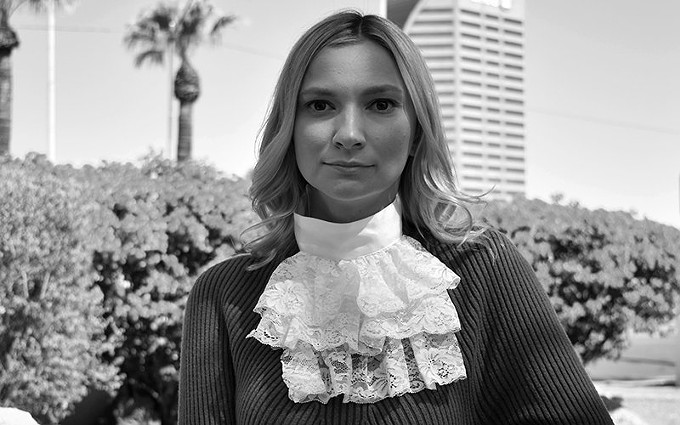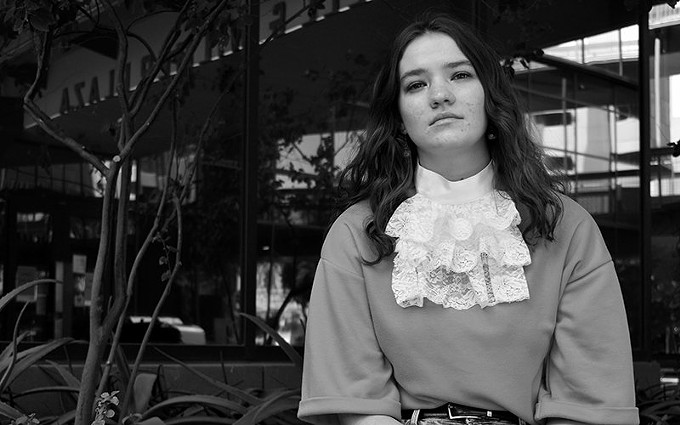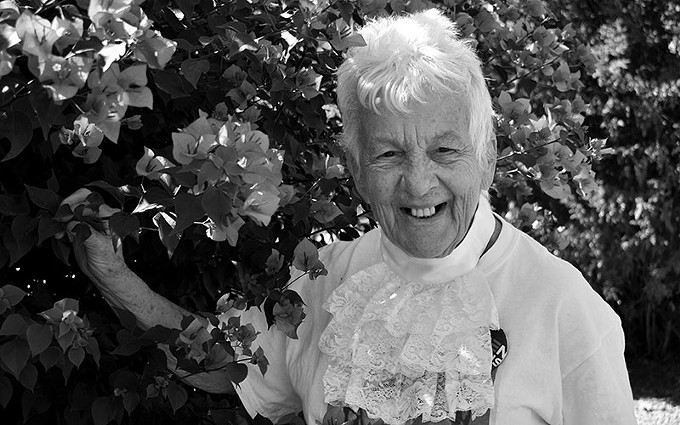Tuesday, April 27, 2021

PHOENIX – Beyond the physical toll of COVID-19, many are facing pandemic-related mental health challenges, including the way they view themselves and their bodies.
Stress, anxiety, depression and decreased human interaction all play a role in the development of negative body image, said Amy Lerner Wasserbauer, a clinical psychologist and counselor at Arizona State University.
“COVID has brought a lot of powerlessness and grief to people,” she said, “so stress, anxiety – all of these are emotional issues around COVID and we tend to focus on external ways of coping when we are under emotional distress.”
A recent study in the United Kingdom found that fears around COVID-19, as well as the consequences of restrictions mandated to curb the spread of the coronavirus that causes the disease, could be contributing to a number of serious mental health issues – including eating disorders.
The research, published in the journal Personality and Individual Differences, surveyed 506 adults in the U.K., with an average age of 34.
The study found that for women, feelings of anxiety and stress caused by COVID-19 were associated with a greater desire for thinness. Among men, the study found that COVID-19-related anxiety and stress was associated with a greater desire for muscularity, with anxiety also associated with body fat dissatisfaction.
Wasserbauer said one coping mechanism many people resort to is food for comfort, shutting down and not exercising. The other, she said, is overexercising, starving oneself and anorexia.
Monday, April 19, 2021

PHOENIX – A documentary recently aired in France titled, “I’m not a slut, I’m a journalist.”
The title might be shocking, but the experiences shared by female sports journalists featured in the documentary don’t come as a surprise to women in sports media.
The documentary featured women speaking candidly about the derogatory comments, lascivious advances and sexual harassment they have faced while working in the sports media industry. It is not uncommon.
Three months ago news broke that Jared Porter, then the general manager of the New York Mets, had sent sexually explicit photos to a female reporter while he was working for the Chicago Cubs.
Similar accusations emerged against Mickey Callaway, a pitching coach for the Los Angeles Angels.
At about the same time, former Golf Channel host Lisa Cornwell accused her male bosses of treating her unfairly in her job, an accusation she took to the Equal Employment Opportunity Commission.
Clearly, gender equality in the sports media industry is a prevalent issue.
“Look at sports television, women are all still expected to look like Barbie dolls,” said Sarah Kezele, update anchor and third voice on “Burns & Gambo,” the afternoon drive-time sports talk show on Phoenix’s ESPN affiliate, Arizona Sports 98.7 FM.
“So I do know that I have missed out on some opportunities because my ‘look’ is not what the hiring manager was looking for.”
Thursday, April 15, 2021

PHOENIX – Nicole Minnick had been a firefighter for seven years when she gave birth in 2008 to her first child, a girl named Kyndal. A few months later, when she returned to work, one thought was foremost in her mind: Would it be safe to breastfeed?
“My second or third shift back to work, we had a fire – and my baby’s 3 months old. I was like, ‘Well I probably shouldn’t nurse her. How long do I need to pump and dump?’” Minnick recalled. “I called the fire department, and they had no idea.”
Turns out extensive research to determine how long carcinogens remain in the breast milk of female firefighters had never been conducted, prompting Minnick to take part in a University of Arizona study.
“This was my baby,” she said. “I wanted to know.”
Now a new UA study aims to build on that body of work and further understand the occupational risks unique to women in the fire service.
The three-year study, funded by a $1.5 million grant from the Federal Emergency Management Agency, will explore stress, cancer risks and the effect of toxins on reproductive health. Researchers hope to enlist 200 women – 100 incumbent firefighters and 100 new recruits – from departments across the U.S., including some from the Tucson Fire Department.
Comparing new recruits with those who’ve served for some years will help identify potential differences in stress and markers in blood associated with increased cancer risk.
“The women and men of the fire service are keeping those of us in the public safe, and therefore it’s really important that we help them by providing information that they can use to keep themselves safe,” said Dr. Jeff Burgess, associate dean for research at the University of Arizona’s College of Public Health.
The project includes a “virtual kitchen table” to provide mentorship for female firefighters with a goal of building resilience and reducing stress. The idea, researcher Sara Jahnke said, is to form an official research question around “What do you need to be supported?”
Monday, April 5, 2021
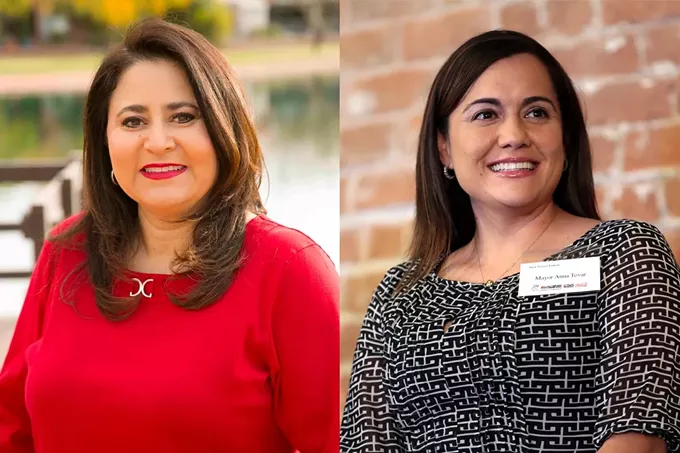
In 2020, Lea Márquez Peterson and Anna Tovar became the first Latinas elected to statewide office in Arizona. They serve on the Arizona Corporation Commission.
PHOENIX – Esme Franco Ruiz is passionate about her work in politics – even though she despises politics.
“I don’t like politics because it tends to be very, very shady,” she said. “I don’t appreciate how it’s a popularity contest of sorts. There’s not really an importance put into actually informing people; it’s more like people are just trying to get your vote with any means possible.”
Ruiz, a sophomore at Arizona State University who’s double majoring in transborder studies and Spanish, also is the board secretary for Aliento @ ASU, a youth-led organization that advocates for undocumented immigrants.
She spends many afternoons in Phoenix neighborhoods, walking door-to-door putting up flyers about upcoming elections.
Ruiz hopes to put more effort into local elections and candidates who “might not have the spotlight in ways that they should,” including Hispanic politicians.
“One of the reasons that change is so slow is not because we don’t want (Hispanics) in office, but we don’t inform people enough in the Latino community,” she said.
Latina leaders in Arizona
Latinos are a growing force in the nation’s political landscape, even as they lag in election to public office in Arizona and elsewhere. Hispanics account for the nation’s largest ethnic or racial minority and more than half of the total U.S. population growth since 2010, with most of the increases in the Southwest.
Hispanics make up nearly one-third of Arizona’s 7.3 million residents, although their last statewide representative was Raúl Castro, who was elected governor in 1974.
That 46-year drought ended Jan. 4, when Anna Tovar and Lea Márquez Peterson were sworn in as Arizona Corporation Commissioners – Márquez Peterson as the chair – and became the first Latinas elected to statewide office in Arizona. They also were the only identified Latinas in the country to win a position in statewide elected executive office in 2020.
Monday, March 15, 2021
Tuesday, January 26, 2021
After last week’s inauguration of the first female vice president, the University of Arizona is hosting a virtual discussion about voting history and voting rights on Thursday, Jan. 28.
The discussion includes a panel of local women in the industry: Pima County Recorder Gabriella Cázares-Kelly; assistant professor of government and public policy Lisa M. Sanchez; and Heidi Osselaer, author of "Winning Their Place: Arizona Women in Politics.”
The panel discussion is presented by UA’s Special Collections in partnership with Patricia MacCorquodale, professor emerita in the Department of Gender and Women's Studies. The event is part of UA’s online exhibit "Founding Mothers: From the Ballot Box to the University.”
According to UA, the panelists will discuss how the 100th anniversary of the right to vote and 2020's historic election outcomes have impacted women. They will also talk about how people and institutions can remove barriers that prevent people from participating in democracy, and how to encourage participation among women and people of color.
The discussion takes place at 6 p.m. Thursday, Jan. 28. The event is open to the community, but registration is required. Register for the online event at the University Libraries website.
Tuesday, January 19, 2021
PHOENIX – May Tiwamangkala remembers mornings at Perryville Prison west of Phoenix, when the Wildland Fire Crew members began chanting and stomping their feet on concrete to let the rest of the prison know it was 5 a.m.
On their training runs, she recalls, one veteran on the all-women crew would shout, “Who are we?”
“Fire crew!”
Her next shout: “Be phenomenal!”
“Or be forgotten!”
The Perryville crew is one of 12 17-person crews of incarcerated firefighters in Arizona, and the only crew of all women. But once crew members leave prison, they often face difficulty getting hired as firefighters, typically because they lack documentation of their work or can’t get the required certification as emergency medical technicians because of their criminal records.
Monday, December 21, 2020
PHOENIX – Justice Ruth Bader Ginsburg was a towering figure in the fight against discrimination based on gender, and her death Sept. 18 was a blow to many women who reverently refer to her as the Notorious RBG. On the three-month anniversary of Ginsburg’s death, women across the state continue to remember her legacy.
Cronkite News asked six Arizona women to reflect on how their lives have been affected by Ginsburg, 87, who served 27 years on the Supreme Court and was a founding counsel for the American Civil Liberties Union’s Women’s Rights Project, which resulted in the high court’s 1971 decision that the Equal Protection Clause of the 14th Amendment applies to women.
Each of the women posed for a portrait wearing a jabot, which was popularized by Ginsburg. Text, photos and audio by Hope O’Brien:
Emily Parker
Emily Parker, 29, a law student at Arizona State University with a masters in women’s history, said Ginsburg’s achievements for equality loom large in American history and are especially meaningful for anyone who has worked in women’s rights.
During my time in graduate school, I was aware of who she was because her decisions have been very significant in terms of the trajectory of women’s rights and liberties in the United States.
The ability to complicate her as a person and understand her; not just as a litigator and this women’s rights advocate in her work as a justice, but just the fact that she, in her approach to law, is very complex. She is known in her later years as being a sort of activist justice, which is a phrase that tends to evoke the idea that someone is going out of their way to make changes. Her approach to her decisions was not, “OK, I’m on the Supreme Court, how would I like to remake the law?” Her approach to being on the Supreme Court was to take a precise and exacting approach to the case at bar.
She is unique in the sense that she appealed to people that were really drawn in by her record as a litigator on women’s rights and gender equality issues. But she also was very limited and exacting in the way that she made decisions, which is something kind of often associated with more conservative justices. So I think it’s the fact that she has always made a point in her role as a judge to not say, “OK, we’re going beyond the scope of the question at issue.”
What was your initial reaction to news of her death?
I started crying because this was so horrible and so tragic on so many levels, and after you get through the initial period of being sad about the fact that someone you idolize and looked up to has passed away, obviously concerns about the implications for that in terms of the composition of the court going forward set in. But it is one of those things that you just never forget.
Madison Alonzo
Having grown up in a culture where she says women feel less important than men Madison Alonzo, 20, a first-generation Mexican-American and Arizona State University student, said Ginsburg became an example of how women can work past discrimination.Coming from a culture that is heavily submissive of women, it was astonishing to see such a strong woman persevere through a male-dominated career. It was comforting to know that there was someone in an influential position in the world that was fighting for me and my rights as a woman.
I knew a lot, but quite frankly not enough. She was not heavily mentioned in the public education system, and most of the information I know is because I went out of my way to learn about her. Much like any public figure, after she passed I was brought to light on certain aspects of her life and career that I never knew about prior to her passing.
I loved learning about the endurance and strength she had as a wife, mother and diplomat. She never stopped working and caring for others’ well-being. She exemplifies what it means to be a good person.
I was with a group of friends trying to relieve some of our COVID-19 anxiety and depression when the news hit. When we read the news, we were all scared and heartbroken. I knew what her death would mean for the Supreme Court and for (the Trump) administration and I was scared thinking about what will happen to fundamental rights for minority groups, if a conservative nomination goes through.
Susan B. Castner
Because she was involved in a case against sex discrimination in pay, business owner Susan B. Castner, 66, had a different perspective on the true impact of the work done by Ginsburg, whom she had looked up to for much of her youth.
The first time I heard about her, and you will laugh about this, was a case in 1976 when I had just graduated from college. And the case that drew my interest was somewhere in Oklahoma and it was about beer. It was a law that said that women could buy beer when they were 18, but men had to wait until they were 21, and as a college graduate that was really important to me at the time. And I didn’t even know at the time that Ruth Bader Ginsburg was going to grow into such an icon.
The first house that I ever bought was in 1978 and I bought it with my now-husband, but we bought the house as equal partners. And I didn’t know it at the time, but I couldn’t have gotten credit or bought a house if his name wasn’t on the mortgage documents. It is things like that that have changed everything that women take for granted now, and it was because of her.
I was being paid 30% less than my male predecessor, and because he was violating my civil rights in not paying me equally, in my mind I believed that I deserved an attorney. That is what I eventually made law on was the appointment of counsel as a plaintiff in a Title XII case. So now if you find yourself a victim of sex discrimination, you can site Castner v. Cablevision, and if you meet the full requirements you will have an attorney appointed to you. And I made law on that in the same courtroom that RBG did for the first time and we were both fighting sex discrimination.
I think the fact that if you were a female in the military you didn’t get an equal housing allowance was nuts, and if you look at a lot of laws that she worked on you scratch your head and go “What?”
And it’s that same thing, she looked at them through the lens of how it affected both sexes, and I think that is why she was such a brilliant attorney and justice. I think she knew in her heart of hearts that she wouldn’t make law if she knew it was bad for women, she had to show how it was bad for everybody.
I was sitting working on something on a deadline and my husband came in and said, “Ruth Bader Ginsburg just died.” And I put my hands in front of my face and just started screaming, I started howling, and he thought I had a stroke. He said I sounded like a wounded animal. And it wasn’t because of the Supreme Court, not because of this experience that we’re going through right now (the nomination and eventual confirmation of Amy Coney Barrett to the high court), but because she was so amazing.
Mary Zatezalo
Ginsburg played a key role in the life of Mary Zatezalo, 26, an instructor of communications at Gilbert Community College, a small business owner and real estate agent. She said Ginsburg influenced more than just who Zatezalo became, but also her ability as a woman to get to where she is now.
When I was growing up, I was fortunate enough to be raised by strong independent females, so it wasn’t uncommon to have conversations on things going on politically or just things going on in the news. She was a name in my household and I feel very fortunate for that.
To me, (author and activist) Mona Eltahawy talks about how one of the seven necessary sins for women is ambition, and I think that is what RBG demonstrated. She committed her whole life to something that not only was work, but was something that she loved. Being able to exist in the spaces that she did, and especially in regards to femininity in how you can still have a family, have an extremely successful marriage and still be successful in your career. And I think it was one of the first times that we saw a female take that lead role, especially in her family unit, and I think that was really special in what she did.
I think about it in terms of independence. Females were kept dependent in order to control, and as soon as just a little bit of wiggle room was given, look at the amazing things that women have achieved in the past hundred years because of women who were able to fight in a public space like her. And there are so many parts of my identity, my career and my existence that I really owe to her.
I think she will be one of those people where you remember where you were when she died. At first, my reaction was shock because I knew what was going to follow (the fight to replace Ginsburg on the court). So part of me was just distant from it, I didn’t want to talk about it, I didn’t want to explain anything or fight with anyone, and so I took a weekend to just sit with it because I knew what was to follow.
Nora Thompson
With an interest in politics from a young age, Nora Thompson, 21, saw Ruth Bader Ginsburg as a role model in her high school years. She’s now at Arizona State University seeking a career in public service and public policy.
I grew up in a very politically minded family. So, throughout my whole life, I always knew, “Oh yeah, there’s the Supreme Court,” but I think really it was high school. It was specifically this economics class that I took over the summer and I didn’t really learn anything but we talked about the Supreme Court. So, I wrote a paper on the Obergefeld v. Hodges case that legalized gay marriage, and I remember just looking into her more, and I loved her, she was my idol at that point in my life.
Seeing Ruth Bader Ginsburg as a lawyer was insane, and it was crazy what the men on the Supreme Court said to her about things that women should and shouldn’t be allowed to do. And she was arguing for women’s rights and for us to be able to do things like take out a mortgage without a husband signing off on it.
And she stood there and held her ground and said, “Actually, it’s ridiculous that we’re not allowed to and women shouldn’t be treated this way and should be treated equally to men.”
I always thought of her positions in the Supreme Court as a really comforting voice and just as a voice of reason. And though it wasn’t all the time, because I can’t sit here and say to myself that everything she has ever done has been amazing, I think that she was still this guiding light and voice of reason in a very chaotic time and very chaotic society right now.
It was always nice to be like, “Ruth Bader Ginsburg said this very eloquently and very reasonably.” And I think her ability to still be civil with the other people on the Supreme Court will be missed.
I hope that we can remember her as the strong woman that fought for equal rights and fought for equal protection. Right now, I think that her death is being overshadowed by whether a new Supreme Court justice should be allowed to be appointed and just everything that is happening in the political world right now.
And I would also want people to remember her as a Jewish woman because there are a lot of things going around about her being up in heaven as an angel, and while it’s all very sweet, it isn’t necessarily the idea of a Jewish afterlife. And so I would want us to remember that she was this big, strong, amazing woman who was also Jewish.
I was driving home and so I had stopped to check my phone at a particularly long red light and my mother had texted me “Did you hear about RBG?” And I knew that it couldn’t be good, and when I got the news alert I felt this sadness and emptiness that I feel when a family member passes away. I was left extremely nervous as to what would happen next with the state of the world.
Nan Inskeep
Former registered nurse and women’s health educator Nan Inskeep, 89, watched when Ruth Bader Ginsburg was confirmed and described her confirmation as one that provided relief knowing that women would have a louder voice in the government.
When was the first time you heard the name Ruth Bader Ginsburg?
I am a very political person, and when I was a little girl, my grandfather was Republican and our family was Democrat and so I would always bet him 10 cents on who would win the elections. And so I followed politics, which included the Supreme Court, so I watched all of those votes. Then when our wonderful Ruth Bader came, I knew I could rest easy. I cannot really pinpoint when I first heard of her, but being a woman and watching what she did in the Supreme Court, I knew she was vital to it.
What do you think made her so different?
She was so fair. And interesting about her life is that her best friend on the court was (Justice Antonin) Scalia and he was an arch-conservative. They had the opposite swing on every position they held and yet they maintained a friendship through it all, and I think that says something about her, too.
She was so smart and then she used that to further justice, rights, and she was the kind of Supreme Court Justice that every justice should be.
It’s going to be hard. And they are going to grow up without Ruth Bader Ginsburg, they certainly should know about her because she will carry that reputation with her forever and ever. But it’s a matter of what is fair, and as I said she was so fair, they need to look at what is right for everybody and not what is simply right for you.
I want them to remember that she never gave up. And to feel the way you do and to believe in what you are feeling and to stand up for it no matter what. It’s a gift, and not everybody can do it, and hopefully with somebody like her as a mentor, because even though she won’t be here, her teachings, writings and reputation will always be a part of the Supreme Court.
Just horror. I remember someone calling to tell me and thinking, “She finally can’t do it anymore.” We watched her go through every single one of those cancers and she could always do it. We watched her go through Harvard for her husband. Oh, my goodness, that woman was exemplary! And yet fair. It was a terrible day for us. But we always know we had a champion.
Wednesday, December 16, 2020
PHOENIX – Attorney Ehsan Zaffar is leading an initiative to establish a civil rights center at Arizona State University to target inequality in the U.S. To do so, Zaffar envisions a range of products, services and programs – perhaps including Yelp-like reviews of how Arizona companies address social justice issues.
“Inequality is the greatest social, political, economic problem facing this country today,” said Zaffar, a civil rights and civil liberties official with the Department of Homeland Security who will join ASU in January. “I think our country is headed back to a time when institutions were powerless to fix the problems in the country. There’s a lack of trust.”
He hopes the center’s work will help strengthen institutions by encouraging them to be more responsive to the public and to produce more factual information about social justice issues.
Zaffar said his work at the center, which will include fundraising, also could examine how news and social media cover certain communities in ways that affect lawmakers, analyze emergency response times in communities of color and explore the gender pay gap in U.S. companies.
Monday, November 16, 2020
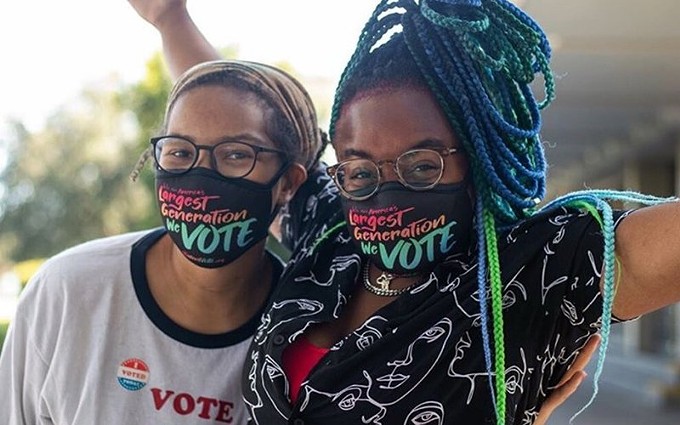
LOS ANGELES – Young people stepped up on two fronts this Election Day: volunteering to replace older poll workers who feared exposure to COVID-19 and pushing more of their peers – an age group with historically low turnout – to register and vote.
Across the Southwest, such organizations as Future Leaders of America, California Campus Vote Project and Arizona PIRG Students New Voters Project worked until the last minute to help students register to vote, answer questions and inform voters about initiatives on the ballot, including Proposition 15 in California.
For 18-year-old Yesenia Ramirez Garcia of Goleta, casting her first vote was a proud moment, as she is the first in her family to vote and the first to go to college. Identity and background affect Garcia’s political advocacy, she said, because her identity is political.
“When being queer is something that is debated, when being a person of color and your protections is something debated. It definitely impacts my background, it impacts who I’m going to pick,” Garcia said.
She is one of many youth leaders who spent the past year working to boost voter turnout among people 18 to 29. Throughout the summer, she worked with Future Leaders of America, an organization that provides engagement opportunities, education experiences and personal development for Latino youth and their families in Ventura and Santa Barbara counties. She worked the phones for Proposition 15, which would have required commercial and industrial properties, except for commercial agriculture, to be taxed based on market value rather than purchase price.


